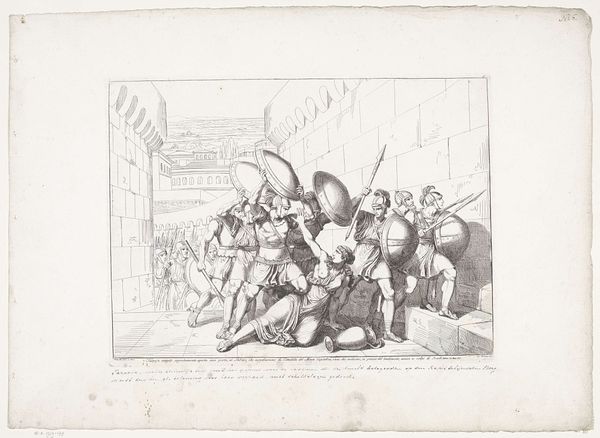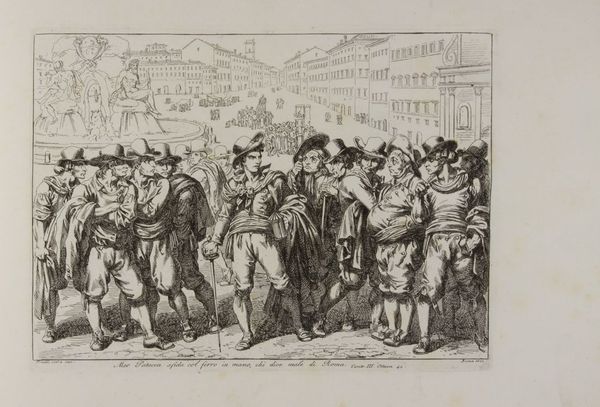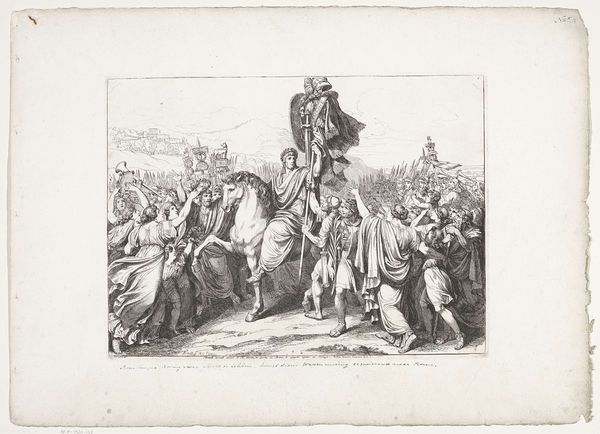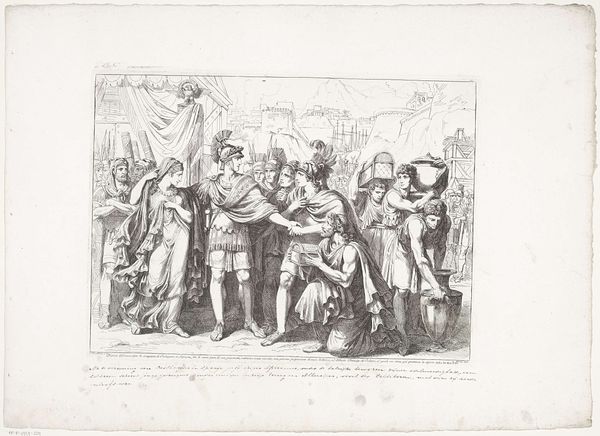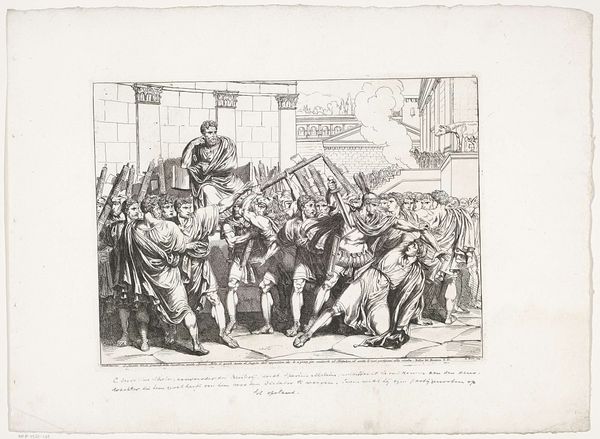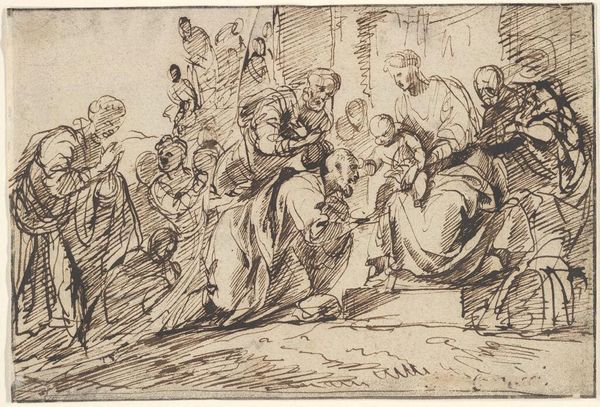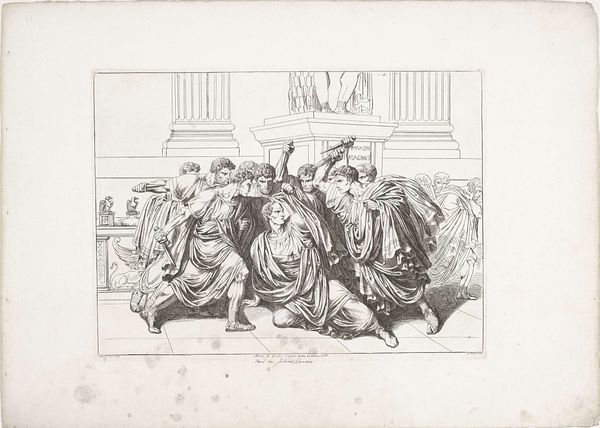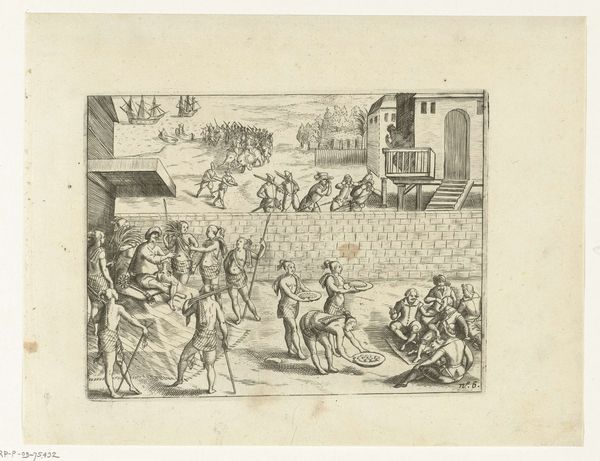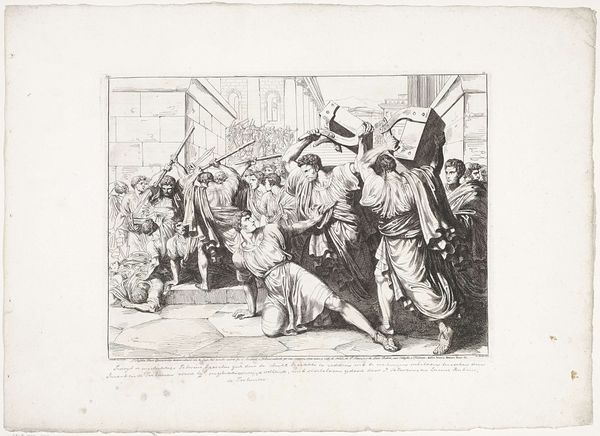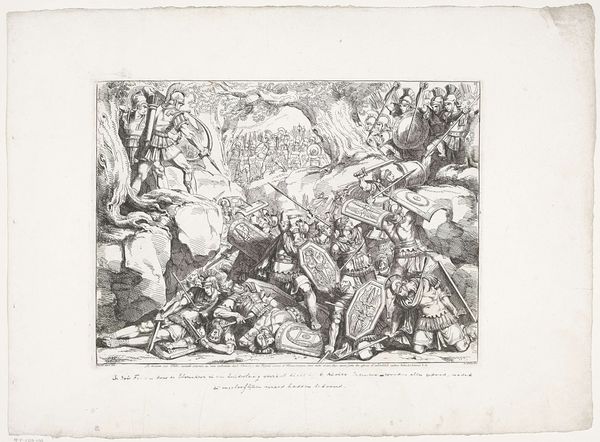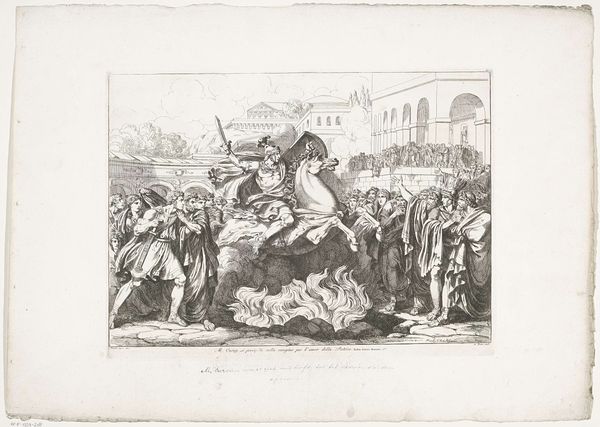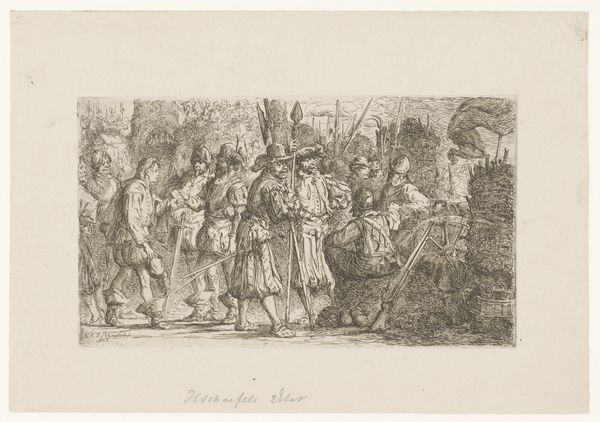
print, etching, engraving
#
neoclacissism
# print
#
etching
#
figuration
#
history-painting
#
engraving
Dimensions: height 316 mm, width 426 mm
Copyright: Rijks Museum: Open Domain
Editor: Here we have Bartolomeo Pinelli's "The Rape of the Sabine Women," an engraving and etching from 1816. The scene is chaotic and unsettling; men seem to be abducting women in what looks like ancient Rome. What stands out to you in this work? Curator: Indeed. This piece offers us a window into how the past was interpreted – and, in a sense, justified – in the 19th century through a Neoclassical lens. Pinelli chooses to depict a foundational myth of Rome, but what does it mean to represent abduction as a heroic act? The ‘Rape of the Sabine Women’ has long been a subject in art history, so let’s consider what happens when the focus shifts from the trauma experienced by these women to the supposed glory of Rome. How does that impact our understanding? Editor: It’s troubling to think about it that way. It’s easy to get caught up in the classical aesthetic and the details of the scene, but framing it as glorifying violence against women definitely complicates things. Curator: Precisely! We must confront the unsettling elements. Neoclassicism often draws upon historical narratives to make contemporary political statements. How might this image be commenting on power, dominance, and even colonial ambitions of Pinelli's time? Can we consider it a form of cultural appropriation or justification for imperial expansion, masked in historical guise? Editor: That’s a lot to consider. I hadn't thought about it beyond just a historical depiction. Curator: By exploring these uncomfortable questions, we start to uncover the deeper ideological work this image is doing. It forces us to think critically about the relationship between art, power, and the stories we choose to tell about our past and our present. Editor: I’ll definitely look at similar historical paintings with a more critical eye moving forward, considering the power dynamics that are portrayed.
Comments
No comments
Be the first to comment and join the conversation on the ultimate creative platform.
